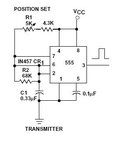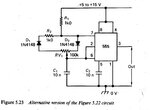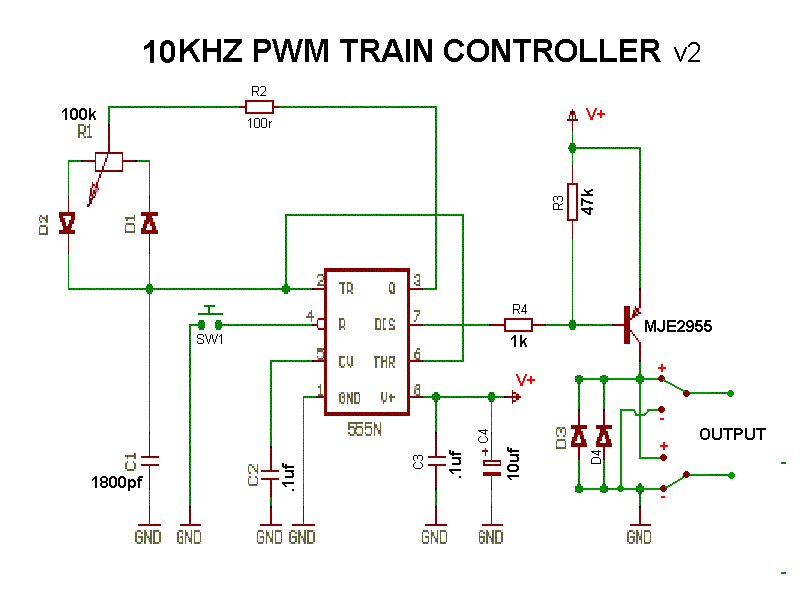mvagusta
Junior Member level 2
Hi everyone, I'm looking at making a model train controller based off this circuit:
**broken link removed**
I'm thinking that by changing C1 to 1800pf/1.8nf, the PWM frequency should be up around 10khz? These little trains run really smoothly with PWM up this high.

The kickstart has a reset time of ~2 seconds, but I think I can get that down to just under 1 second by changing C3 from 220uf to a 100uf instead?
The other thing is, how do I engage the kickstart??? Is it by connecting both R2 and C3 to ground?
I've also added a DPDT reversing switch for the output, and a MJE2955 transistor instead, since it's nearly as cheap as the original BD140 and has a 10A rating, so it will handle the trains easily.
I'm also thinking to add another diode in parrallel with the output diode, for redundant protection against back emf from the model train engines. Good idea?
I think I should also add an inductor to the output, after the reversing switch, something a little beefy with ~1mm thick wire and ~.5 ohm resistance, for some short circuit protection.
**broken link removed**
I'm thinking that by changing C1 to 1800pf/1.8nf, the PWM frequency should be up around 10khz? These little trains run really smoothly with PWM up this high.

The kickstart has a reset time of ~2 seconds, but I think I can get that down to just under 1 second by changing C3 from 220uf to a 100uf instead?
The other thing is, how do I engage the kickstart??? Is it by connecting both R2 and C3 to ground?
I've also added a DPDT reversing switch for the output, and a MJE2955 transistor instead, since it's nearly as cheap as the original BD140 and has a 10A rating, so it will handle the trains easily.
I'm also thinking to add another diode in parrallel with the output diode, for redundant protection against back emf from the model train engines. Good idea?
I think I should also add an inductor to the output, after the reversing switch, something a little beefy with ~1mm thick wire and ~.5 ohm resistance, for some short circuit protection.


